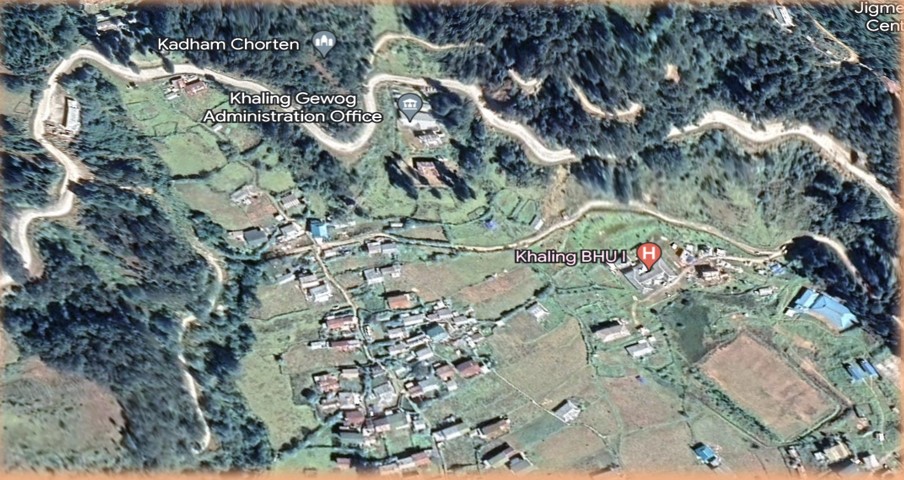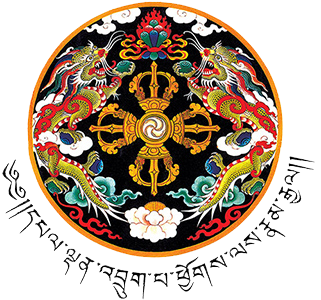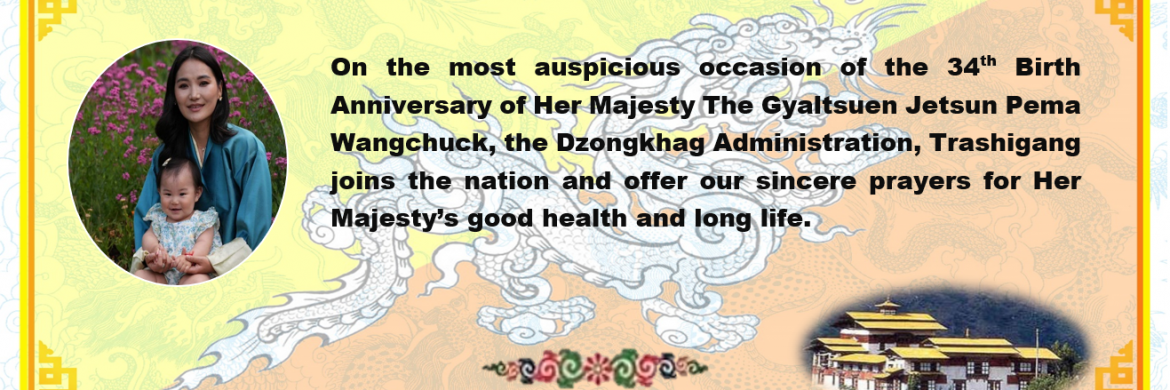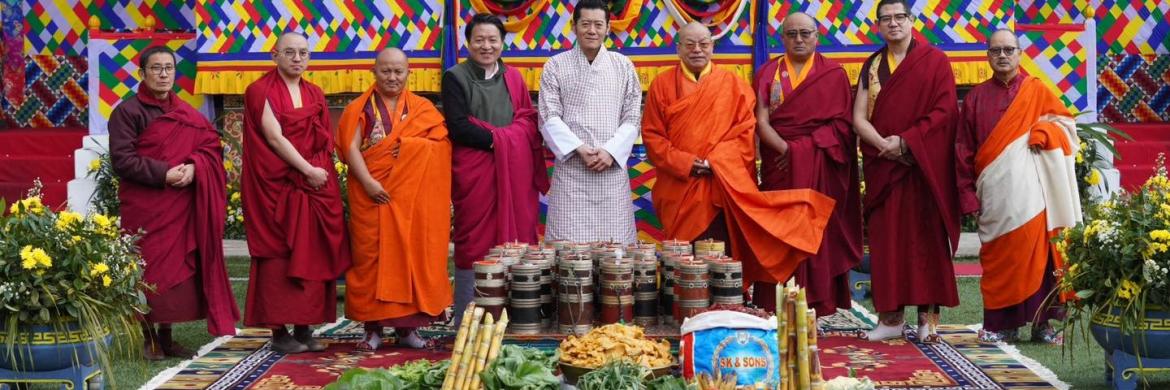
Khaling Gewog is located 55 km away from the Trashigang Dzongkhag to the west and 27km from Warmrong Drungkhag to the North-East. The area of the Gewog has approximately 154.5 sq. km bordering Udzorong, Kanglung, Thrimshing, and Lumang Gewog. The altitude of the Gewog range from 1240 to 2300 MASL and experiences moderate and humid summer and cold winter. The Gewog has clayey loam type of soil with 85% forest coverage.
The Gewog Administration has 11 staff consisting of Gup, Mangmi, 6 Tshogpas, an Administrative Officer, a Driver, and a Caretaker.
The Gewog consists of 603 households with a population of approximately 6057 (3126 male and 2931 female) spreading to six Chiwogs and forty-eight villages. Tshanglakha is the main dialect spoken by the people of Khaling.
Maize is the primary staple food grown in the Gewog. The millet, lentil, buckwheat, mustard, and paddy are also grown on small scales. The vegetables grown in the Gewog are pumpkin, chilies, turnip, radish, beans, cabbage, cauliflower, and garlic.
Potato is the main cash crop and of late people have shown some interest in growing apples, pears, citrus, and hazelnut on a small scale as cash crops.
The Gewog has a good network of motor roads, particularly farm roads, and enjoys relatively better access to marketing facilities. However, the annual income generated from the farm products is minimal owing to poor crop yields because of impeding factors such as poor soil conditions, farm laborer shortages, and loss of crops to wild animals and pests annually. As a result, achieving food self-sufficiency remains one of the biggest challenges for the Gewog. The present poverty rate of the Gewog is 27% as per the National Statistic 2017.
The Gewog has a social infrastructure such as an RNR center, 1 Higher secondary school, 1 Lower secondary school, 4 primary schools, 1 ECCD, 1 Hospital, 7 Out Reach Clinic (ORC), 1 Community center, Bhutan Telecom, cable services, and BDBL branch unit rendering basic services to the community. The Gewog has 100% drinking water supply coverage with the 12 RWSS.
Gewog Profile Khaling Gewog 2023
Population and land use
Area (Sq.km) 154.5
Km from Dzongkhag headquarters to the Gewog center 55
Population figure total 6057
Male 3126
Female 2931
Population density 39.2
Administrative unit
Gewog center 1
Chiwogs 6
No of villages 48
No of Gongtong 124
RNR center
RNR center 1
Range office 1
Piggery farm 0
Poultry farm 6
Milk processing unit 0
Active/registered farmers’ group 23
No of community forest 6
No of farm roads 19
Length of farm roads in KM 68.895
No of electric fencing 12
Length of electric fencing in KM 31.97
Number of functional irrigation channel 2
Length of functional irrigation channel 6.128 KM (3.628+2.5)
Health center
Hospital 1
No of BHU-I 0
No of BHU-II 0
ORC with shed 7
Education
Higher secondary school 1
Middle secondary school 0
Lower secondary school 1
Primary school 4
Extended classroom 0
Non-formal education center (NFE) 1
Early Child Development Center (ECCD) 1
Religious and culture
N0 of community own lhakhang 7
No of Government lhakhang 3
No of Private own lhakhang 3
No of chortens 214
Bridges
Total number of motor able bridge 2
Total number of Non-motor able bridge 3
Demography by chewog wise
Sl No Chewog name Male Female Total
1 Jiri_lemi 187 178 365
2 Barshong 254 181 435
3 Gomchu_Kholddoong 176 175 351
4 Khaling 209 233 442
5 Brekha_menangzor 212 171 383
6 Beyphu_Tokaphu 232 248 480
All chewog 2456




